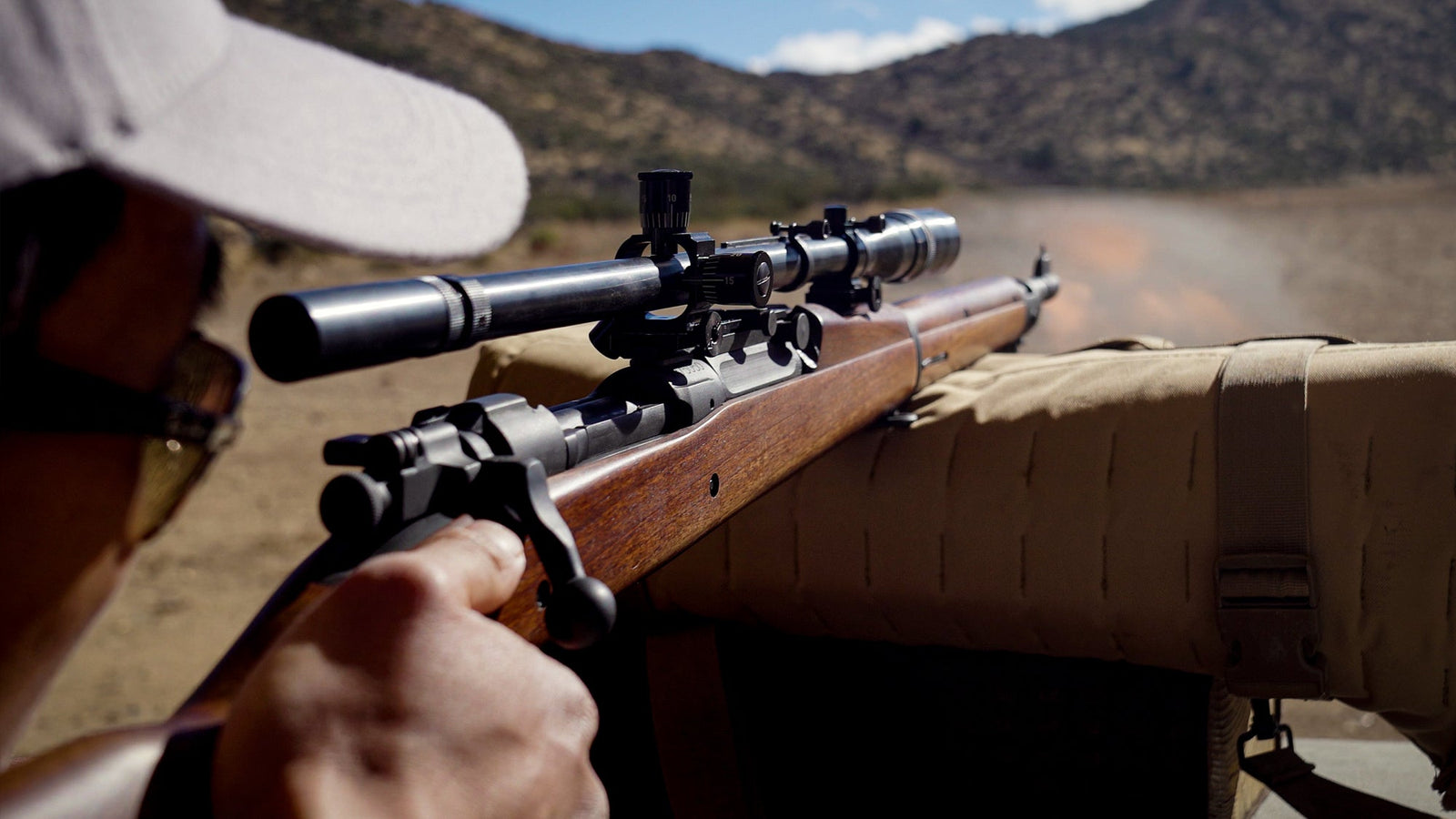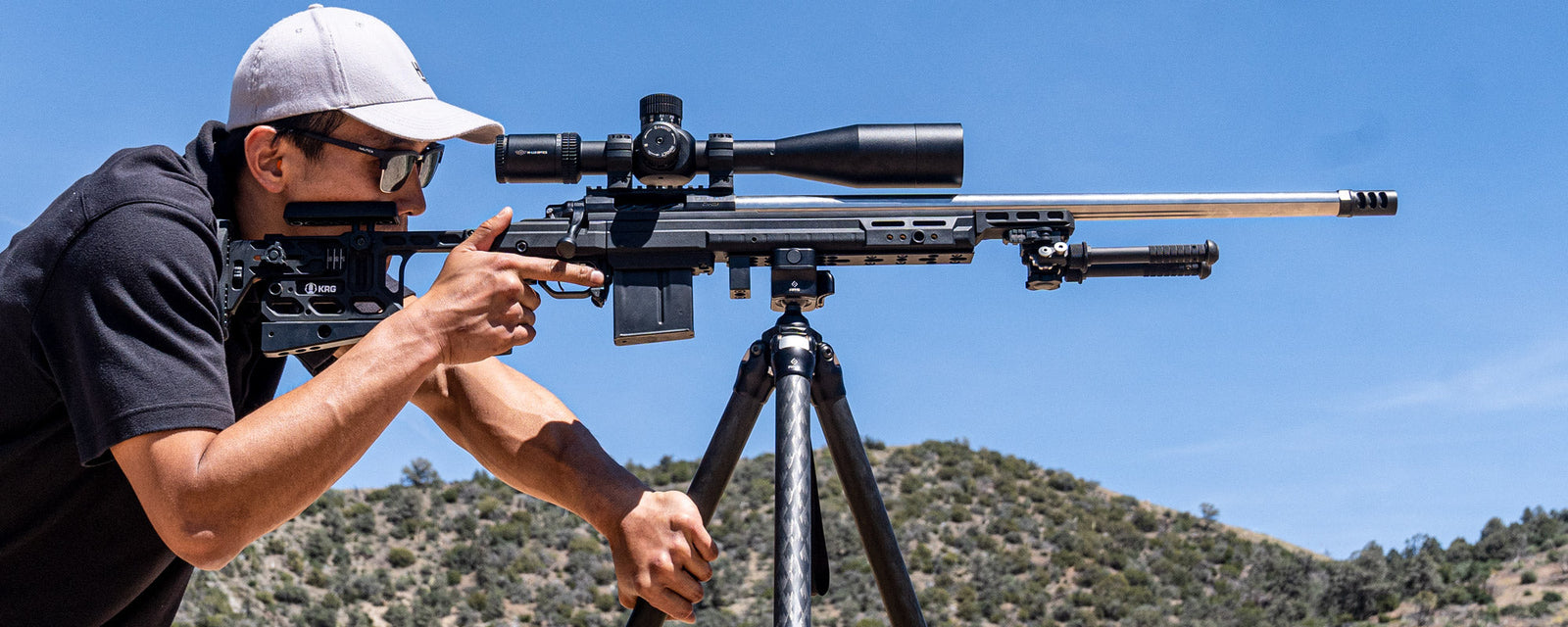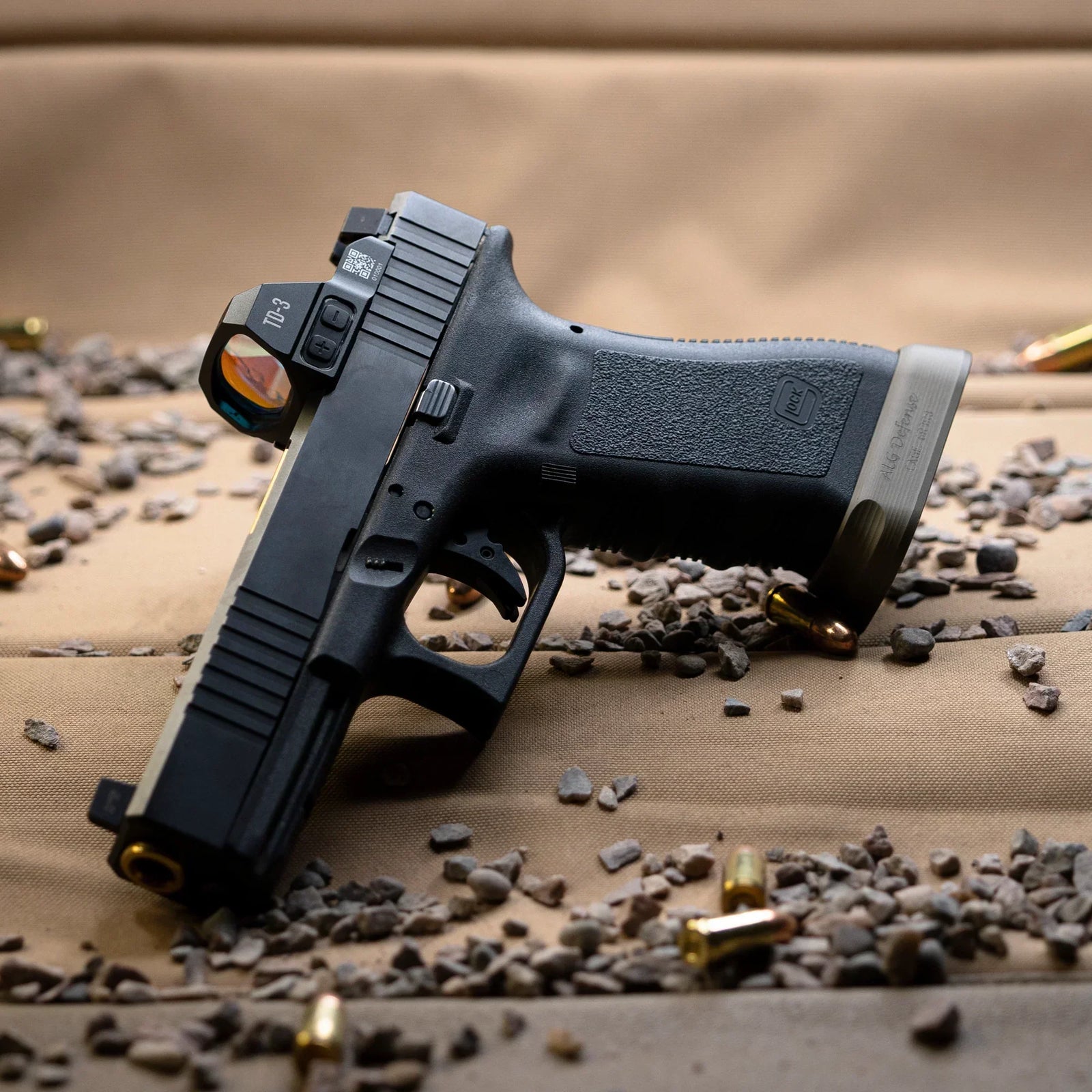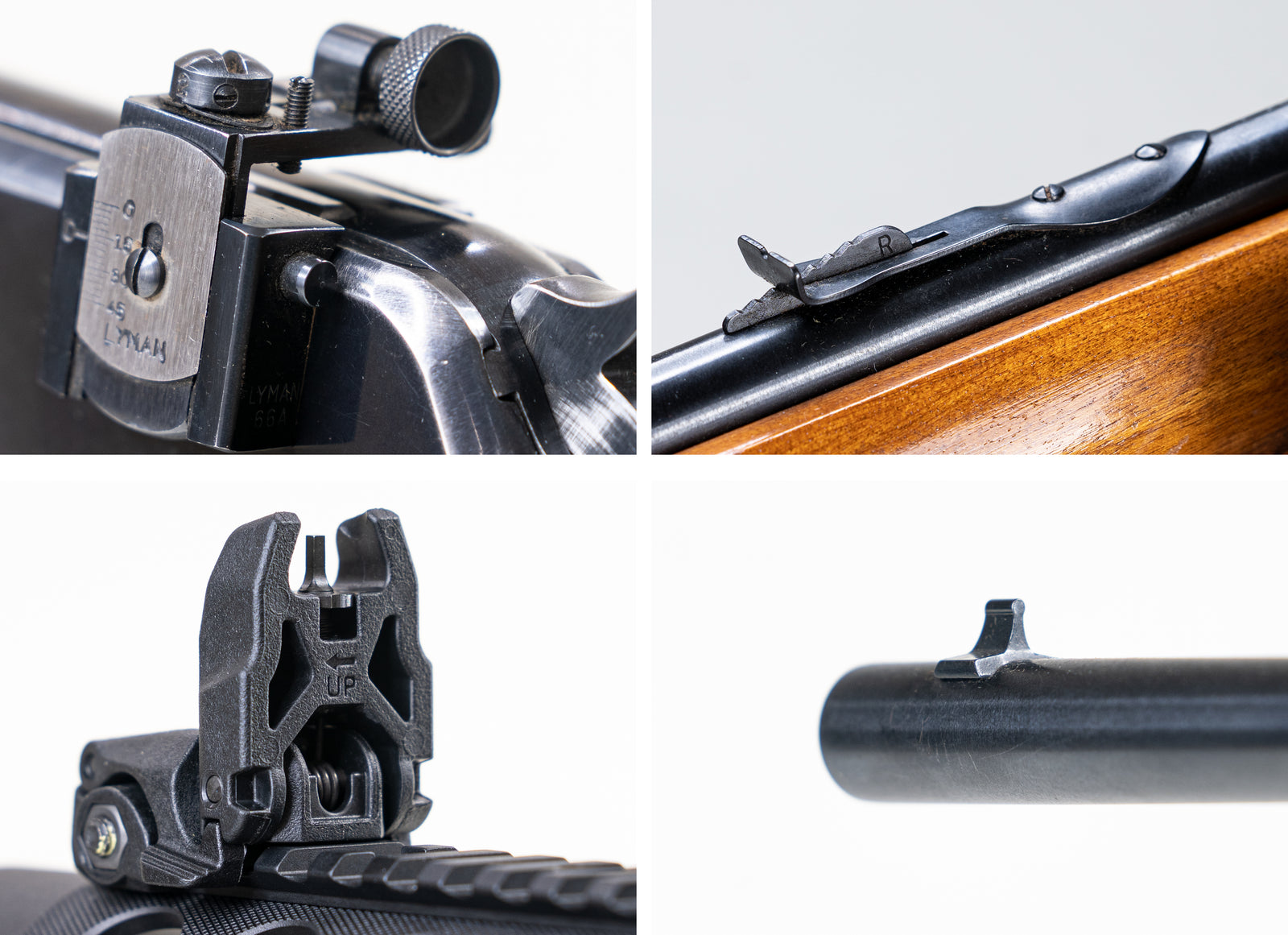Your field of vision with a human eyeball is very wide. If you open your eyes and stare loosely ahead, everything you can see at once is your field of vision. You have about 120 degrees of width in binocular vision (vision where both eyes see the object), including your peripheral vision. In addition, you have about 130 degrees vertically of binocular vision, mostly because the nose doesn’t get in the way in this direction.
Explaining MOA
Imagine a line extending straight forward from between your eyes. We’ll say this is a laser pointer that points directly at what you’re looking at. Right now, you’re looking at a target 100 yards away. Specifically, you’re shining that laser pointer on the left edge of the target. This target will be 1 inch wide, because it makes this example easier. Now imagine that you’re turning your laser pointer (and your eyes) just a bit to the right; enough to line up with the right side of the target, 1 inch to the right of where you were just looking.
You have adjusted your aim 1 inch at 100 yards. If you examine the shape formed by the left-side laser, right-side laser, and the target, it forms a very skinny and long triangle. The nearly-right-angles down at the target are unimportant to this story, as we only care about the angle formed back near you. This angle describes how much you’ve adjusted your aim. Much like turning a boat toward a new heading, you are turning your head (or rifle) by a particular angle to look at a new spot.
The amount you’ve turned your head to move that inch is one minute of angle. One minute, meaning 1/60th, and the angle in degrees. You’ve turned one sixtieth of one degree to move that laser point one inch at a hundred yards distance. This change is also known as 1 MOA (1 minute of angle).
Why Use MOA?
Adjustments made to your aim and your scope are often discussed in angular measurements such as MOA (and MIL, which we’ll talk about in a bit). Angular measurements are used for a very important reason:
They are proportional at distance. That triangle we used earlier - 100 yards on the long sides, 1 inch on the narrow far end - can be scaled up. At 200 yards, a proportional triangle would have a far side of 2 inches. 1 MOA is 1 inch at 100 yards, but it’s 2 inches at 200 yards. At 300 yards distance, this triangle scales up to 3 inches per MOA.
The change in adjustment is happening back at the rifle end, not at the target. If you point your rifle 1 MOA to the left or right to adjust for wind, this adjustment is going to have a proportionally bigger effect as your bullet moves further down range. The farther the target, the smaller your correction will have to be. At 100 yards of distance, 1/60th of 1 degree is 1 inch of movement. At 1000 yards, the same 1 MOA of change becomes 10 inches on the target. To move 1 inch at 1000 yards, you’d have to adjust 1/600th of a degree.

What is an MOA?
The above numbers for MOA, meaning 1 inch per 100 yards, is very close to the actual set of numbers. Technically, 1 MOA is actually 1.047 inches. At distances under 1000 yards, conversions between linear measurements and angular measurements are rounded to easier whole numbers. A value of 1 inch per 100 yards is known as shooter’s MOA. Past 1000 yards, it’ll be more important to convert measurements using the actual MOA value.
Scopes that use an MOA adjustment system will typically have adjustments as fine as ¼ or ½ MOA on the turrets. This means that you can adjust your crosshairs or point of impact by ¼” or 1/2" increments at 100 yards - roughly the diameter of common rifle bullets.
What are MILs?
MILs (also known as milliradians) are also angular measurements. 1 MIL is equal to 1/1000th of the distance. For this reason, MILs are commonly applied when using metric measurements. At 1000 meters, 1 MIL is 1 meter on the target. At 1000 yards, 1 MIL is 36 inches (1 yard).
At 100 meters, a 1 MIL adjustment is 1/10th of a meter, or 10 centimeters. Scopes using MIL adjustments will have divisions of 1/10th MIL per click of the turret. This is a movement of 1 centimeter at 100 meters. This is only slightly more than the diameter of a common rifle bullet.

How Do Adjustments Work?
Scopes generally adjust the point of impact. Let’s run a little scenario: Pretend you’re pointing your crosshairs right at the center of the bullseye, 100 yards away. You’ve taken a few shots, and they’re all hitting two inches below center, and one inch to the right. It would be awfully nice if the bullets were putting holes right where your crosshairs are pointing, which is right at the center of the bullseye. To get those bullets hitting where the crosshairs are pointing, you’ll need to dial up two inches and left one inch. At 100 yards, 1 MOA is 1 inch on the target. You’ll have to turn the turret in the indicated 'up' direction (whether it’s clockwise or counter clockwise) by 2 MOA, and 'left' 1 MOA.
Let’s pretend you’ve got the scope perfectly zeroed now, and the bullets are hitting right where the crosshairs are pointed, 100 yards away. When you shoot out at a greater distance, the bullets are going to hit a little low and potentially a bit to the side due to wind. Let’s pretend you took some shots at 200 yards, and the bullets are hitting four inches below and two inches to the right of the crosshairs. To get the bullets to meet up with the crosshairs, you’ll need to dial again. In this case, 4 inches up and 2 inches to the left. At 200 yards, 1 MOA covers 2 inches. You’ll need to turn the turret 2 MOA up (4” / 2” per MOA at 200), and 1 MOA left.
This is how adjustments work when your scope’s turrets adjust point of impact, as most modern scopes do.





Leave a comment (all fields required)